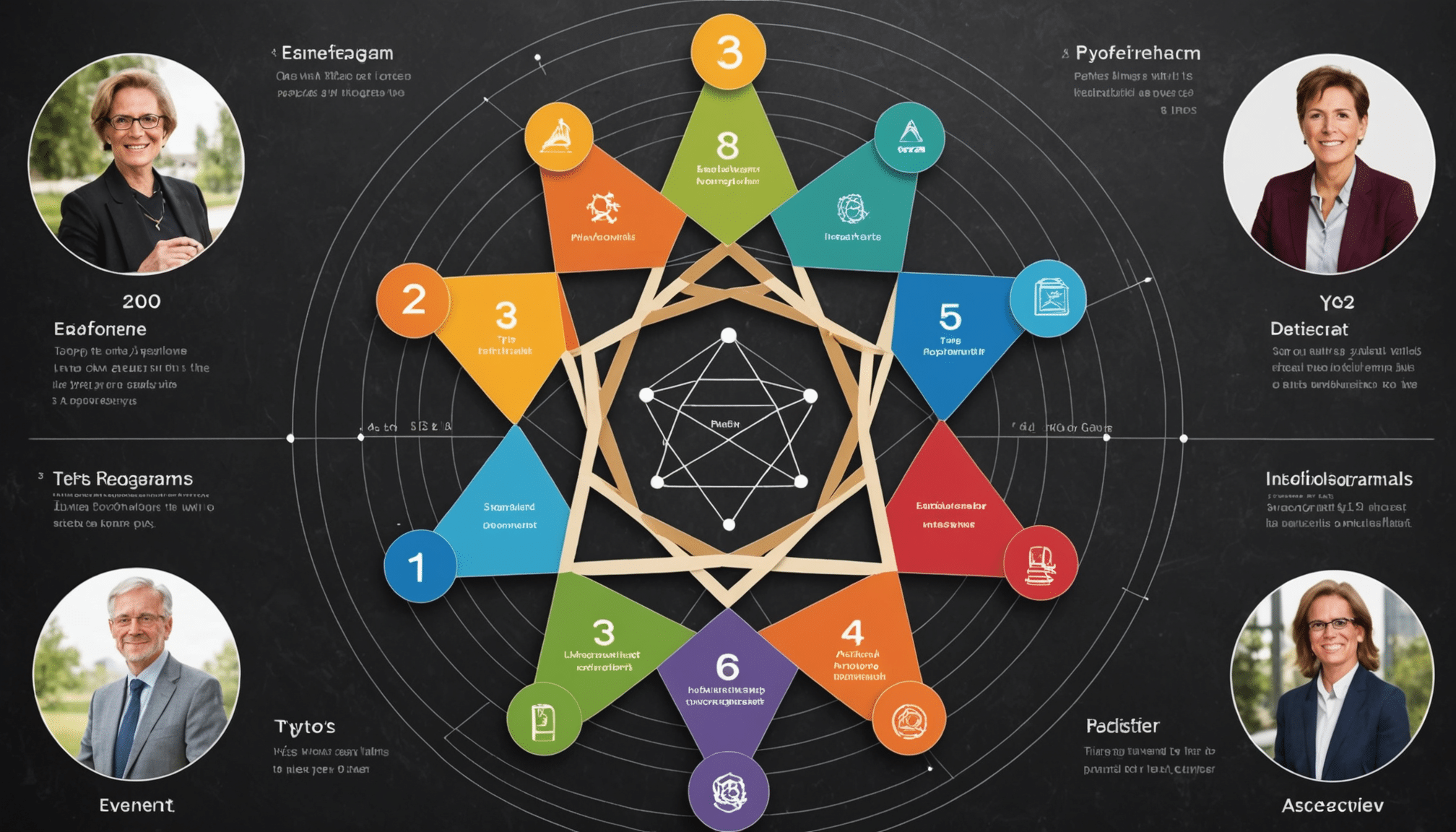The year 2025 opens new possibilities for personal transformation and growth. Each Enneagram type carries unique strengths, but these talents can also become limitations if ignored. Breaking free from certain habits and beliefs can lead to profound and liberating changes. Let’s explore how each of the nine Enneagram types can let go of what holds them back to fully flourish this year.

In 2025, each Enneagram type must identify the aspects they need to let go of in order to grow and evolve. For type 1, the perfectionist, it involves releasing the constant need for perfection. Accepting that imperfection is part of the process can pave the way for greater serenity and collaboration. Type 2, the helpers, must overcome the fear of being rejected if they set boundaries, in order to preserve their energy for those who truly matter to them.
Type 3, the achievers, should free themselves from the necessity of constantly proving their worth through their accomplishments. By connecting more deeply with their personal values, they will find a sense of fulfilment. For type 4, the individualists, letting go of the belief of being intrinsically flawed can allow them to celebrate themselves as they are.
Type 5, the investigators, must detach from the fear of never knowing enough and begin to take actions based on the knowledge they already possess. Type 6, the loyalists, will free themselves by releasing the incessant need to foresee every possible disaster, embracing confidence in their past preparations. Type 7, the enthusiasts, will be better off by letting go of their fear of missing out, savoring the present moment.
Type 8, the challengers, can strengthen their relationships by realizing that showing their vulnerability is a strength, not a weakness. Finally, type 9, the peacemakers, must break free from conflict avoidance, recognizing the importance of honest communication and advocating for their personal needs.

what the perfectionist should let go of in 2025
The perfectionist, filled with determination and principles, often carries the weight of the world on their shoulders. In 2025, it is time to question this constant need for perfection. By accepting imperfections, the perfectionist can discover inner serenity and allow others to help, thereby establishing more harmonious relationships. Imagine the impact of recognizing that peace of mind does not come from external perfection, but from understanding that perfection and serenity can coexist.
what the helper should leave behind in 2025
The altruist tends to give without counting, often at the expense of their own well-being. In 2025, it is crucial for this type to free themselves from the fear of not being loved if they set boundaries. Saying “no” can be perceived as a selfish act, but in reality, it is an act of self-love. This year, focusing on identifying the relationships and responsibilities that deeply nourish the soul can transform the altruist’s life, allowing them to give from a place of abundance and joy.
what the achiever should let go of in 2025
The achiever is often caught in the endless pursuit of measurable success, where titles and achievements become pillars of personal supremacy. This incessant need to prove their worth to others can lead to a superficial existence and emotional exhaustion. In 2025, it is imperative for the achiever to embrace vulnerability as a strength, not as a weakness. By opening up authentically, the achiever discovers a wealth of deeper and more meaningful connections, marked by genuine love and true trust.

FAQ
Q: What is the purpose of the article “What Each Enneagram Type Should Let Go of in 2025”?
A: The article aims to help each Enneagram type identify and let go of an aspect of their behavior that holds them back, in order to feel truly empowered and thrive.
Q: What should Type 1, the Perfectionist, let go of?
A: Type 1 should let go of the need to always “get it right.” This means learning to accept imperfections and asking for help.
Q: What is the main release suggested for Type 2, the Helper?
A: Type 2 is advised to rid themselves of the fear of being unloved if they set boundaries. Saying no can be an act of love and allow them to focus on meaningful relationships.
Q: Why should Type 3 let go of the constant need to prove their worth?
A: Because it can lead to a feeling of loneliness despite success. Embracing vulnerability and slowing down allows for deeper connections to form.
Q: What should Type 4, the Individualist, leave behind?
A: Type 4 should let go of the belief that they are fundamentally flawed. It is important to celebrate their uniqueness and develop a sense of belonging.
Q: What is the challenge for Type 5, the Investigator, in 2025?
A: Type 5 must overcome the fear of never having enough knowledge or resources. Action and putting knowledge into practice are crucial for growth.
Q: How should Type 6, the Loyalist, change their approach?
A: Type 6 is encouraged to let go of the need to prepare for every possible disaster. Self-confidence and resilience are essential for living fully.
Q: How can Type 7, the Enthusiast, make the most of 2025?
A: By letting go of the fear of missing out, Type 7 can learn to savor the present moment and find more joy in being present.
Q: Why does Type 8, the Challenger, need to revisit their perception of vulnerability?
A: Because vulnerability is not a weakness, but a strength that allows for authentic human connections and bonds.
Q: What is the recommendation for Type 9, the Peacemaker, regarding conflicts?
A: Type 9 should stop avoiding conflicts at all costs. Open communication and self-assertion enrich relationships and foster growth.











